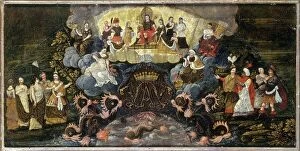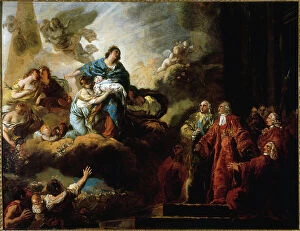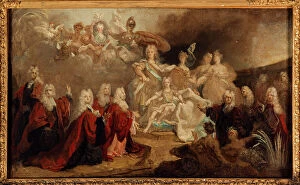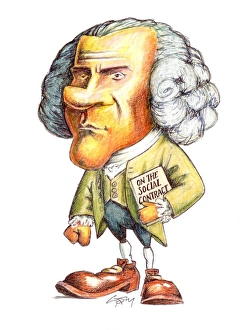Divine Right Of Kings Collection
"The Divine Right of Kings: A Glimpse into Monarchical Power and its Consequences" In the intricate world of monarchy
All Professionally Made to Order for Quick Shipping
"The Divine Right of Kings: A Glimpse into Monarchical Power and its Consequences" In the intricate world of monarchy, the concept of the divine right of kings held immense significance. Through a series of captivating images, we are transported to different eras, witnessing both the glory and downfall associated with this belief. A king who might have saved himself - a gravure that leaves us pondering over what could have been. Charles I, depicted in an engraving from 1600-49, stands as a symbol of power and authority. Yet his portrait at his execution tells a different story - one filled with turmoil and unrest. The Coronation of Charles II is captured in Ms Lat 1141 fol. 2v, showcasing the grandeur surrounding this momentous event. The Hand of Justice reminds us that even kings are bound by laws; it is their duty to maintain order within their realms. Ms Lat 3893 fol. 1 presents Spiritual and Temporal Power from the Decrets de Gratien, emphasizing the intertwining nature between religious authority and monarchical rule. This connection can be seen throughout history as rulers sought validation through divine endorsement. However, not all monarchs were able to wield power effectively or maintain stability within their kingdoms. Scene in a Madhouse from A Rakes Progress (1735) depicts chaos amidst royalty's descent into madness – a stark reminder that absolute power can lead to ruin if misused. King Philip II's image from Ms 782 f. 280 offers insight into France's tumultuous past where royal authority was constantly challenged by internal strife and external threats. James II's portrayal further exemplifies how political instability can undermine even those born into privilege and entitlement during times when loyalty wavers among subjects. Scene in Bedlam plate VIII takes us back to A Rakes Progress' engraving once more – revealing society's fascination with mental illness as they questioned whether such afflictions could affect even the most powerful.













